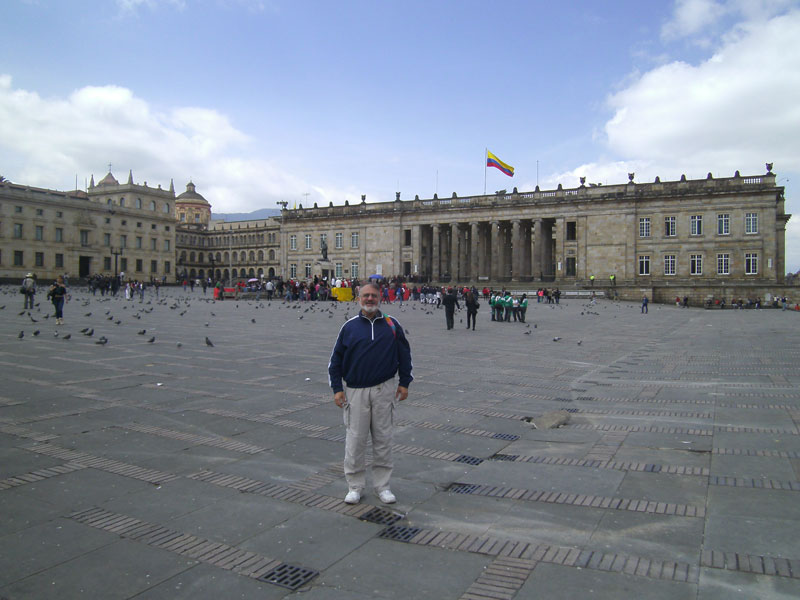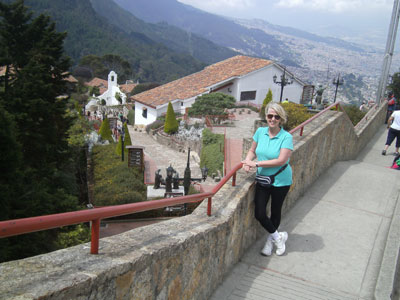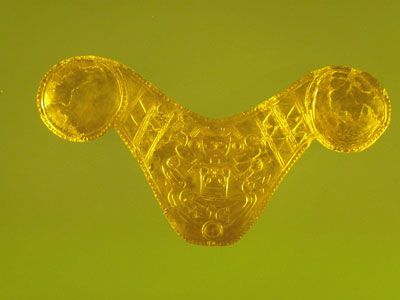An inspired visit to Colombia’s Coffee Zone, Caribbean coast and capital city
This article appears on page 50 of the September 2014 issue.
by Marv and Carole Feldman; Jacksonville, Florida
One of the reasons we love International Travel News is that it is full of wonderful stories about people, like us, who take unusual and interesting trips. We were inspired by Dorothy Van Horn’s story (in the March 2013 issue) about her trip to Panama and Colombia. It was Colombia in which we were really interested — we had been to Panama several times — so off to Colombia we flew.
Beginning in Cartagena
We are independent travelers and rarely take tours. Fortunately, LAN Airlines was running a special and we timed it just right, flying from Miami to Bogotá to Cartagena and back for under $300 each. Amazing!
We began our April 2013 tour on Colombia’s Caribbean coast in Cartagena de Indias. An important center of trade in the New World, Cartagena was strategically placed for defense.
Today, its sights, such as the UNESCO World Heritage-listed Old City, attract thousands of visitors, including us.
We settled into our air-conditioned (A/C is essential) 34th-floor apartment overlooking the beach in the nearby suburb of Bocagrande, which reminded us of Waikiki with its skyscraper apartment buildings and hotels. (We booked our apartment through Airbnb.com for about $80 per night.) While its lively vibe was an attraction, we were really in Cartagena to wander the narrow streets of the Old City.
Our first full day began with strong Colombian coffee, then we plunged into the atmosphere of the Old City. Numerous beautifully restored old colonial buildings, churches and palaces (one being the former Inquisition headquarters) were everywhere.
We stopped to relax with locals in leafy plazas and enjoyed a delicious “executive lunch” (typically a 3-course meal served over the lunch hour at many small restaurants) for just a few dollars. It seems that South America continues to be one of the last places in the world where the US dollar has value.
After a busy day of touring, we soothed our weary bodies in our building’s refreshing infinity pool, situated high above the Caribbean Sea. Our day concluded on the streets of Bocagrande amongst the hive of activity with music and happy throngs.
Diving in
We spent a delightful and fascinating afternoon the next day on a chiva, a brightly colored, open-sided bus featuring blaring music and a somewhat hair-raising ride, as we visited Cartagena’s top attractions. In the past, these rickety buses used to be the standard means of transportation between Colombia’s towns for people, animals, etc. At night, these buses morph into “rumba” buses, with salsa bands on board and drinking revelers.
Top attractions on this chiva tour were an early-17th century Augustine convent perched on the top of a nearby mountain, giving us a bird’s-eye view over the city, and the massive 17th-century Castillo de San Felipe de Barajas.
Continuing our random wanderings, we visited the city’s tiny Gold Museum, with artifacts thousands of years old on display, and we walked on the Old City walls.
As simple as it may sound, Carole’s favorite spot was the lovely Plaza de Bolívar, with its requisite statue of Simón Bolívar, Colombia’s liberator from Spain, and shade trees, providing a cool respite from the heat.
Lunch at an elegant nearby restaurant, La Vitrola (Calle Baloco, No. 33-201), was a highlight. We each had fresh fish, and, at about $30 per person, this was our big splurge on this trip.
Cartagena’s only flaw, for us, was the ever-present aggressive vendors, selling everything from cheap trinkets to genuine emeralds. There was no shelter anywhere from this annoyance!
Nevertheless, Cartagena is a wonderful destination, and we are happy we spent five days there.
Moving on to Bogotá
Following our arrival at Bogotá’s El Dorado Airport, we suddenly found ourselves in a taxi weaving amongst thousands of noisy (but calm) demonstrators out for the annual National Day for Memory and Solidarity with Victims, recognizing those who had suffered human rights violations.
Roadblocks and heavily armed police in riot gear with shotguns and ferocious attack dogs straining at the leash clogged the traffic. This was quite unnerving, so we were happy when our taxi safely delivered us to our charming boutique hotel, an oasis of calm and tranquility.
We had low expectations for this sprawling city of over eight million people, which is why we had booked only three nights there, devoting most of our time in Colombia to other destinations, but as sanitation workers hauled off mounds of trash from all over town, we began to realize that this is a beautiful capital city with much to offer.
Bogotá is just a 4-hour flight from Miami, yet it is a world away, with a different language and its own culture, food, music and scenery. In years past, we had seen news items on the FARC guerrillas and drug wars in Colombia, which kept us and other travelers away, but things in Latin America change quickly, and in this case it has been for the better.
Our trusty Lonely Planet guidebook led us to a perfect hotel choice in Bogotá’s La Candelaria (Old City) area. Near many universities and within walking distance of major sights, plazas, shops, restaurants and other attractions, our hotel (COP166,000 or $89, per night, double) had the rather unusual name of Casa Platypus (Carrera 3, No. 12F-28; phone +57 1 281 1801); the owner had once visited Australia.
It took some time for our bodies to adjust to Bogotá’s altitude of 8,000-plus feet, so we relaxed before heading out.
In earnest, we hit the ground running to take in the highlights of this amazing capital. We started by taking a funicular 500 meters up to Monserrate Peak for a panoramic vista of this sprawling city. There, we toured a pretty church, a mecca for pilgrims, which is lit by multicolored lights in the evening.
Bogotá has numerous museums and we picked a few, beginning with her spectacular Gold Museum. While the Spanish conquistadores tried to strip this country (and many others) of its gold, they did not get it all! Stunning and plentiful golden artifacts, many thousands of years old, were tastefully displayed.
For fun, we hit the Botero Museum, filled with many original works of art from Colombia’s most famous artist, including his humorous paintings of all things chubby.
While admiring his art, imagine our surprise when we heard our names called! Suddenly, an attractive young lady ran up and embraced us. She was the director of the Spanish-language school we had attended in Lima, Peru, a year before! Small world, indeed!
Plaza de Bolívar, Bogotá´s huge central square, has a checkered history. In 1985, guerillas stormed the Palace of Justice there, killing 11 justices and dozens of Colombian soldiers and burning the building until the army overwhelmed them.
To counter this somber visit, we stopped at a little candy/sweets store, La Puerta Falsa (open since 1816) for some local treats.
In the Coffee Zone
For the third (and final) area on our itinerary, we chose the Zona Cafetera, the center of Colombia’s coffee industry. On our short Avianca flight from Bogotá to the city of Armenia, among our fellow passengers were many successful owners and executives who traded globally in this commodity.
Armenia, a prosperous provincial city of 300,000, is nestled in a lush, green semitropical mountain area at an altitude of over 5,000 feet — perfect for growing Colombia’s famous coffee beans.
Although an earthquake in 1999 flattened much of the city center, an area we found unimpressive, we enjoyed a busy springtime Saturday sampling coffee in several cafés, eating delicious street food and joining the throngs of shoppers, vendors and musicians giving Armenia’s Plaza de Bolívar (yes, another one!) good and happy vibes.
Our Hotel Bolívar Plaza (Calle 21, No. 14-17; phone +57 6 741 0083) was comfortable and centrally located. We booked our room, about $65 per night, from Colombia via Skype. The rate included a very nice full breakfast on the rooftop terrace.
Unlike in Cartagena and Bogotá, where we saw many foreign tourists, in Armenia we seemed to be the only ones, and locals welcomed us with genuine warmth, smiles and friendly conversation.
Coffee-farm tourism began in Colombia’s Coffee Zone, spawning numerous fincas (agricultural estates) and haciendas, which dot the verdant countryside. We had traveled to this area especially to see and enjoy this beauty.
Mountain towns
One day trip took us on a wild but fun bus ride ($3 round trip) from Armenia to the small town of Salento, set amidst spectacular, gorgeous, green, terraced mountains. The bus was full of locals of all ages, including young backpackers, people selling snacks and others with animals, with Latin music blaring — all very colorful.
As it was a Sunday, many Colombians were drawn to this traditional town to walk its quaint streets, patronize its numerous craft stalls, drink coffee and dine on the delicious specialty of the area, fresh trout. What a joy it was to have fresh fish from a local stream, and it was perhaps the best meal we had eaten in Colombia up to then.
By contrast, our excursion to Filandia was tranquil. Less touristy and more “authentic” than Salento, this town included a central plaza surrounded by numerous small businesses and dominated by a large Catholic church.
We popped into small bakeries and a few handicraft shops (the area is famous for its baskets), drank some more coffee and chatted with friendly locals.
The highlight of this outing was not the little town of Filandia, itself, but the stunning scenery en route.
For our last experience in the Coffee Zone, we decided to go to the campo (countryside) to stay in rustic comfort at a traditional finca, the Finca Hotel Alejandria (Corregimiento El Caimo; reserve through La Quinta Porra Sede Rural at +57 6 745 81 72). Much to our surprise, we were the only guests and had the luxury of the entire staff’s undivided attention. Our room cost approximately $70 per night, including breakfast.
In this tranquil, lush, pristine setting, we were taken on a tour of the coffee groves and shown how beans are processed. We also saw different varieties of exotic tropical fruits and flowers, some of which were new to us, and were introduced to the livestock (cows, chickens, ducks and turkeys). We were treated like family, another example of the warmth shown by the people of this country.
Since it was not possible to make our air connection from the Coffee Zone through Bogotá to Miami in one day, we took a short flight back to Colombia’s capital city for an overnight stay. This time, we stayed in the fashionable business district at Hotel Ibis Bogotá Museo (phone +57 1 381 4666), an inexpensive ($65) but excellent choice, and enjoyed the evening with an upscale “farewell to Colombia” dinner, which was also a celebration of Marv’s birthday.
Back home in Miami, we reflected on our wonderful trip to Colombia. There was no doubt that going there was truly a great adventure!



